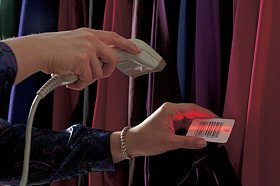Ensuring Bar Code Quality in the Supply Chain
 Many different industries are going crazy for radio frequency identification and QR codes. But the humble bar code is still the most widely used auto ID technology, especially in the manufacturing supply chain. And that means the importance of bar code quality can't be understated.
Many different industries are going crazy for radio frequency identification and QR codes. But the humble bar code is still the most widely used auto ID technology, especially in the manufacturing supply chain. And that means the importance of bar code quality can't be understated.
But when talking about bar code quality, users must understand exactly what's involved. For example, many believe that if a bar code can be scanned then there should be no quality problems. But some scanners are better than others. Instead, bar code verification serves as a stronger benchmark of quality.
What is bar code verification?
Verification measures the print quality of a bar code with the goal of determining how well it will perform in different environments using a variety of scanners. A printed bar code is checked against standards put in place by international organizations, such as the American National Standards Institute (ANSI).
The standards organization develops a set of test criteria for bar code quality, ensuring that a code that receives a "passing" score should scan on most commercially available scanners. During the testing process, bar codes are scanned multiple times and close to a dozen criteria are compared to the standard. Each bar code is graded for quality on an A to F scale and those that grade out at a "C" or better should read successfully on most scanners.
Why is bar code verification important?
Bar codes that lack readability can be very costly to businesses. Any product that requires special handling (because of a low quality bar code) slows down automated processes and adds cost. A large retailer with many suppliers expects that the bar codes on every product will scan quickly and accurately. Those that don't may be subject to chargebacks, meaning that a whole shipment could be returned to the supplier.
Retailers may also specify contractually a certain bar code grade or quality level. Suppliers using bar code verification processes are less likely to encounter fines or high chargeback rates.
Trends in bar code quality
(1) Increased use of 2D codes. QR and other 2D bar codes are being used more and more by businesses and partners within the supply chain. Compared to 1D bar codes, 2D codes can be more tolerant of fluctuations in print quality. And 2D codes can only be read and decoded using an image-based reader (a camera).
(2) High-resolution ink-jet printing. More and more businesses are turning to higher resolution ink-jet printing rather than flexo. Ink-jet delivers more dots per inch (DPI) which means a more accurate bar code
What is needed to maintain a successful supply chain using bar codes?
(1) Retailers must enforce a certain level of standards from their suppliers.
(2) Management of individual companies must commit to a high level of compliance.
(3) Incorporate basic bar code training.
(4) Implement a quality control (QC) process using bar code verification equipment.
(5) Incorporate in depth operator training on equipment used to print bar codes.
(6) Continual monitoring of changes in packaging (such as the composition of the carton fibers) that will affect bar code print quality.
By considering the effect of every step in the process on the readability of bar codes, companies can lower chargeback rates and reduce potential fines due to lower quality bar codes.
More related articles:
AIM Expo 2011 Offers Educational Opportunities For the Auto ID Industry
Direct Part Marking: An Evolving Technology For Automated Traceability
YouTube Videos that illustrate how to make labels and bar codes:
Create a QR Code for business cards
Make sheets of bar code labels
{jcomments on}
